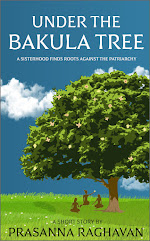Three ways you can diversify your stories.
In an organisational set-up, telling and listening to the stories of the marginalised, you can practise Diversity, Equity and Inclusivity to make them feel at home and have maximum productivity, the same in the family, all for the sake of better humanity. Writers should use the power of storytelling to counteract marginalisation by writing inclusively.
 |
| Picture credit to unsplash.com |
Diversifying your story? What does that mean?
Diversifying stories, as I understand it, being inclusive, expanding your story theme to a broader campus or understanding our world more realistically.
A better way to explain it is to look at the non-inclusive stories. Old stories are among them. E.g. the typical once-upon-a-time stories. A prince falls in love with a princess and faces insurmountable obstacles to get her. Ultimately, with indelible help from people who obliged him out of piety and deliverance, he gets crowned with the victory and the princess. But, the proper character development of those obliged to him was never featured in the stories. They were marginalised!.
The trend of stereotyping the privileged at the expense of those lowered or pitted has mostly stayed the same.
However, humanity has progressed a long way to ask questions about the inclusivity in those stories. A call for acceptance of diversity, inclusivity and equality is getting loud and clear, not an act of benevolence, claiming the nature of humanity.
Humanity is diverse. And the stories should reflect that.
Three ways you can diversity your stories.
1. At the organisational set-up.
Practice DEI (Diversity, Equity and Inclusion).
What is DEI?
It refers to the organisational treatment to promote "fair treatment and full participation of all people, " particularly those groups who have historically been underrepresented or subject to discrimination based on identity or disability." Identity refers to gender, culture, religion, ethnicity, age or opinion. If you are keen to know more, please visit here.
Businesses and organisations in countries like the US and UK have started implementing DEI using stories. People deliver the best of themselves when they feel at home. And stories are the best emotional drivers to make them do that.
Everybody has a story based on life experiences, cultural upbringing, social status, etc. And relaying their stories to other people make them feel safe and warmly welcomed in an organisation, group, or place. But if the trend is stereotyped to maintain the selected ethos and trends, this cannot happen. And they are forced to imitate it, forgetting who they are. And they constrain their stories and personality and cannot function as productive individuals in the workplace or society.
We are all in an organisational set-up; at home, work, or wherever we are. We can practise listening to the stories of others, marginalised in the name of their disability and gender by an identity imposed onto them by no mistake of them.
If a husband listens to his wife's story and his children's, all can feel emotionally safe to better their relationship, a changed worldview, and a better life.
2. Storytellers write inclusive stories.
"As writers, we hold the power to counteract marginalisation in literature by writing inclusively. When we actively work to improve the quality and diversity of the representation present in our stories, we can help dismantle harmful societal hierarchies, expand our readers' worldviews, and ultimately ensure that every reader sees themselves in the pages of their favourite books."
Storytellers can understand others' perspectives to include diversity in their storytelling. This is not lip service, a token service, or cultural appropriation but paying attention to present a fully representative character from among them.
Writers have to associate with them and research. This is a challenging task. Research to understand the mistakes made in the past is essential, though not discernable readily. The acclaimed history can be a journey of the heroes and carefully preserved and protected as the fundamental truth of the selected. One needs courage, honesty and a modern sense of humanity to break through that.
3. The danger of a single story.
None can better express how a single story distorts and alienate one's worldview since childhood than Chimmanandu Adichie in her acclaimed Ted Talk. The problem of 'single stories' she highlights is that it is not complete. It excludes the majority.
White males are a privileged class and receive a lot of racial criticism. And they were the majority present at the talk matters a lot when discussing the need for inclusivity in storytelling.
Let me conclude this, throwing Chimmandu's Tex Talk for the readers.
Chimamanda Nkosi Adichie:
Conclusion
In an organisational set-up, telling and listening to the stories of the marginalised, you can practise Diversity, Equity and Inclusivity to make them feel at home and have maximum productivity, the same in the family, all for the sake of better humanity. Writers should use the power of storytelling to counteract marginalisation by writing inclusively.
This post is a part of Blogchatter Blog Hop www.theblogchatter.com.







4 comments
The dangers of a single story if my favouritest talk :)
ReplyDeleteThank you, mine too :)
DeleteSome valuable tips here.
ReplyDeleteThank you, for reading my post and the kind words.
ReplyDeletePost a Comment